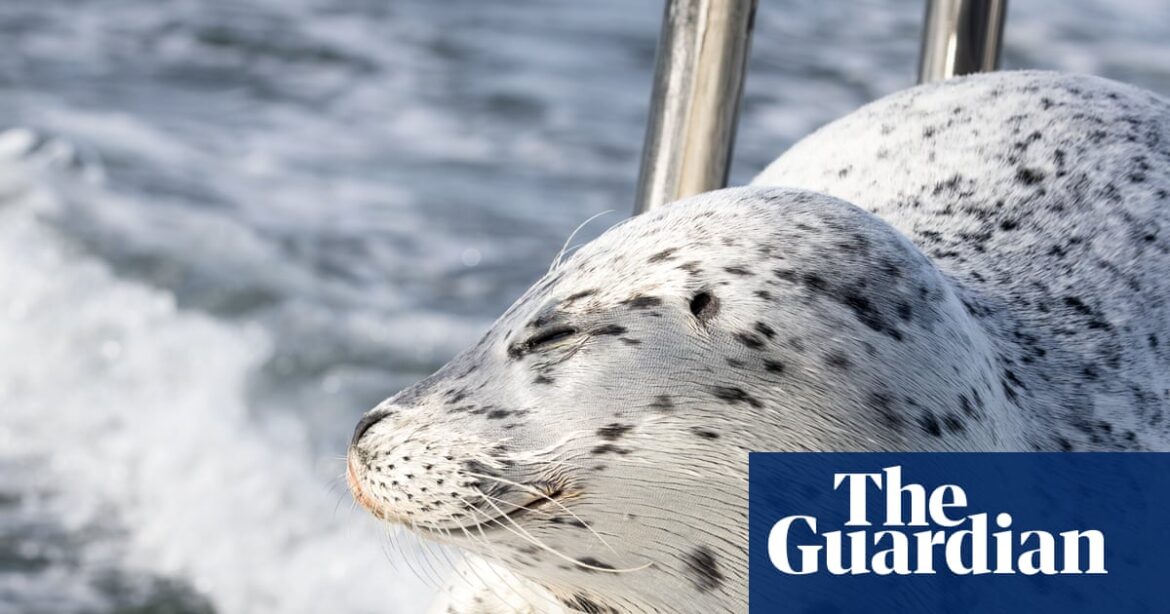In a remarkable display of nature’s raw power and the interconnectedness of life, Charvet Drucker, a wildlife photographer, recently documented a breathtaking encounter during a whale-watching trip in the Salish Sea, just off the coast of Seattle. This event not only serves as a vivid illustration of the dynamics between predator and prey but also prompts reflection on governance, ethics, and our role in the stewardship of nature.
A Dance of Life and Death
While aboard a modest 20-foot boat, Drucker found herself amidst a pod of at least eight killer whales, or orcas, engaged in a primal hunt for a harbor seal. The orcas’ synchronized movements and tail slaps indicated their coordinated efforts, reminiscent of a masterful performance choreographed by nature itself. Drucker, utilizing the zoom lens of her camera, identified the seal frantically attempting to escape the predators. In an instant, she captured haunting images of the seal leaping through the air—an act that seemed to signal its imminent demise.
However, as the orcas closed in on her vessel, Drucker and her group swiftly recognized that the hunt was very much active. In adherence with wildlife boating regulations, they shut off the engine to mitigate any potential harm to the whales. Remarkably, the seal made a daring leap onto the swim platform at the back of the boat, instinctively claiming it as a sanctuary—a testament to the will to survive predominant in the natural world.
Ethical Considerations at Play
The incident complicates the ethical landscape we inhabit as observers of such events. As per wildlife regulations, interaction with the seal is prohibited, yet Drucker positioned herself as a witness rather than an enforcer of these rules. Her heartfelt response, captured in the video where she tenderly addresses the seal—“You’re good, just stay, buddy”—underscores the innate compassion we have for life, even in its most precarious forms.
This poignant moment extends beyond the immediate drama of life and death; it provokes inquiries about our role in terms of governance and ethics in wildlife conservation. Are regulations adequate? Do they balance the need for the survival of species with the instinctual urges that drive species interactions? The interplay of ethical decision-making and rigorous adherence to regulations prompts a deeper examination of human governance in relation to wildlife and nature.
Innovation and Adaptive Strategies in Nature
As the drama unfolded, nature displayed an extraordinary array of strategies. The orcas employed a technique known as “wave-washing,” where they orchestrated their movements to create turbulent waves designed to dislodge the seal from its temporary refuge. This method, documented by scientists for decades, illustrates not only the intelligence and adaptive capabilities of orcas but also their understanding of their environment—a blueprint for innovation that human leaders can learn from.
In contemporary society, the ability to innovate and adapt in the face of challenges is increasingly critical. Organizations and leaders are called upon to observe, learn, and respond to unforeseen circumstances, just as the orcas did in their pursuit of prey. The lessons learned from the natural world highlight the value of strategic planning, teamwork, and an acute awareness of the surrounding context.
Team Dynamics and Leadership
Drucker’s evolving allegiance—initially with the orcas as a photographer captivated by their majesty, later shifting to the seal as it sought refuge—illustrates the complex nature of loyalties and team dynamics that extend into human leadership narratives. In critical situations, leaders often find themselves torn between competing interests and ethical obligations.
This nuance in Drucker’s perspective emphasizes the depth of leadership, where effective decision-making is not solely about making hard choices but also about cultivating an understanding of different viewpoints and repercussions. It raises the broader question of how leaders can embrace flexibility in alliances while maintaining a strong ethical grounding.
Dralys Insight
The extraordinary encounter captured by Charvet Drucker offers valuable insights for leaders, organizations, and society at large.
-
Embracing Ethical Reflection: The delicate balance between regulatory compliance and ethical decision-making can be complex. Leaders should foster an environment that allows for reflection on societal values, prioritizing care for both wildlife and community in their policies.
-
Cultivating Innovative Thinking: Drawing inspiration from the natural world can drive innovation. Observing and adapting successful strategies found in nature can solidify resilience and creativity in leadership practices.
-
Understanding Team Dynamics: The transformation of allegiances encountered in Drucker’s narrative speaks to the significance of understanding diverse perspectives within teams. Leaders must cultivate a culture of empathy, enabling them to make nuanced decisions that reflect the intricacies of human and environmental interrelationships.
- Promoting Stewardship: Ultimately, the episode serves as a call to action for stewardship of the natural world, urging leaders to embrace their roles as guardians of both the environment and society. By integrating ethical governance with innovative practices and fostering empathy, leaders can forge a sustainable path forward.
Through this lens, we are invited to consider our relationship with the natural world and the ethical dimensions of leadership, governance, and innovation in tackling the challenges of our time. The raw beauty and drama of life as revealed in this encounter serve as a poignant reminder of the interconnectedness of all beings and the responsibilities we hold to nurture and protect our shared environment.
Adapted for Dralys Insight from global reports and public sources.

